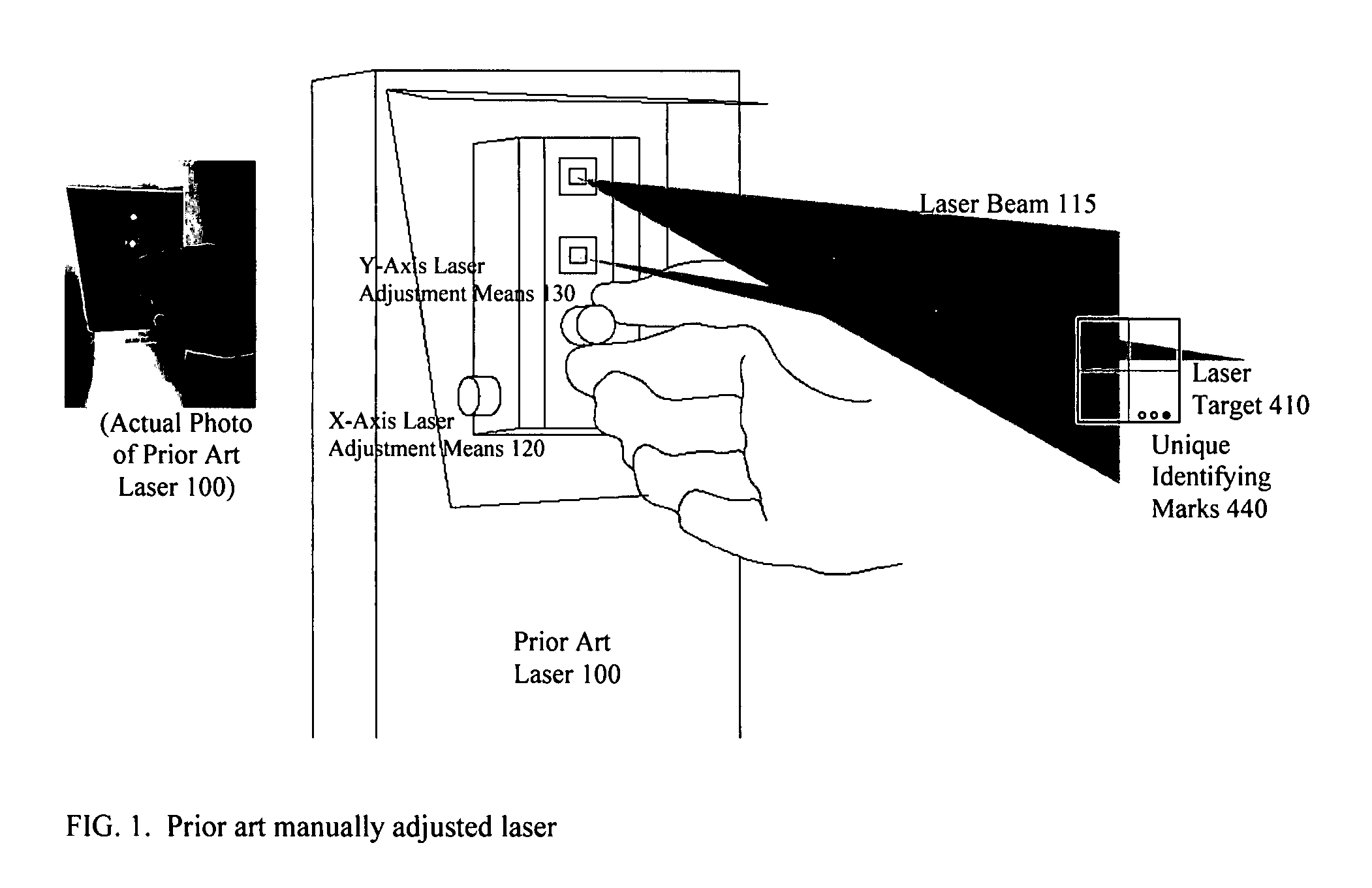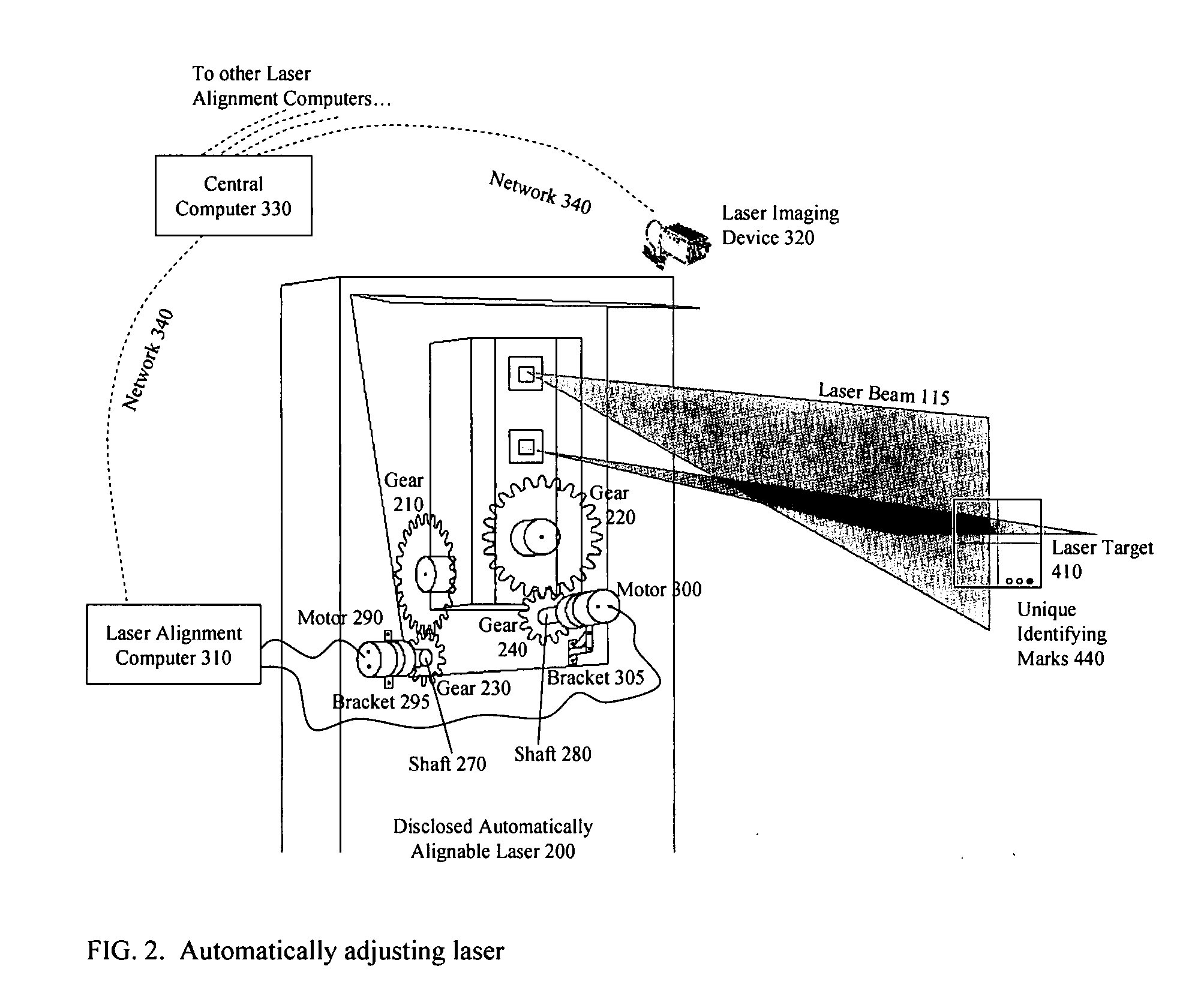Automatic laser alignment system
- Summary
- Abstract
- Description
- Claims
- Application Information
AI Technical Summary
Benefits of technology
Problems solved by technology
Method used
Image
Examples
Embodiment Construction
[0019] A prior art manually alignable laser 100 is shown in FIG. 1. The laser beam 115 is emitted from the laser 100, and the X-Axis manual adjustment means 120 can align the laser beam 115 positive or negative in the X direction, and the Y-Axis manual adjustment means 130 can align the laser beam 115 positive or negative in the Y direction. There are many other varieties of prior art lasers with different kinds of knobs, screws, motors, or other means to realign the laser beam 115. The present invention applies to any prior art laser that has means for the user to align the laser beam in two orthogonal dimensions. X and Y coordinates are relative to the laser target 410. This manual alignment process is tedious and subject to potentially large errors, so an automated system with better accuracy is very desirable. In the automatic system, the manual adjustment means 120 and 130 will be replaced with a connection to automatic adjustment means, such as motors, hydraulics, or any other...
PUM
 Login to View More
Login to View More Abstract
Description
Claims
Application Information
 Login to View More
Login to View More - R&D
- Intellectual Property
- Life Sciences
- Materials
- Tech Scout
- Unparalleled Data Quality
- Higher Quality Content
- 60% Fewer Hallucinations
Browse by: Latest US Patents, China's latest patents, Technical Efficacy Thesaurus, Application Domain, Technology Topic, Popular Technical Reports.
© 2025 PatSnap. All rights reserved.Legal|Privacy policy|Modern Slavery Act Transparency Statement|Sitemap|About US| Contact US: help@patsnap.com



